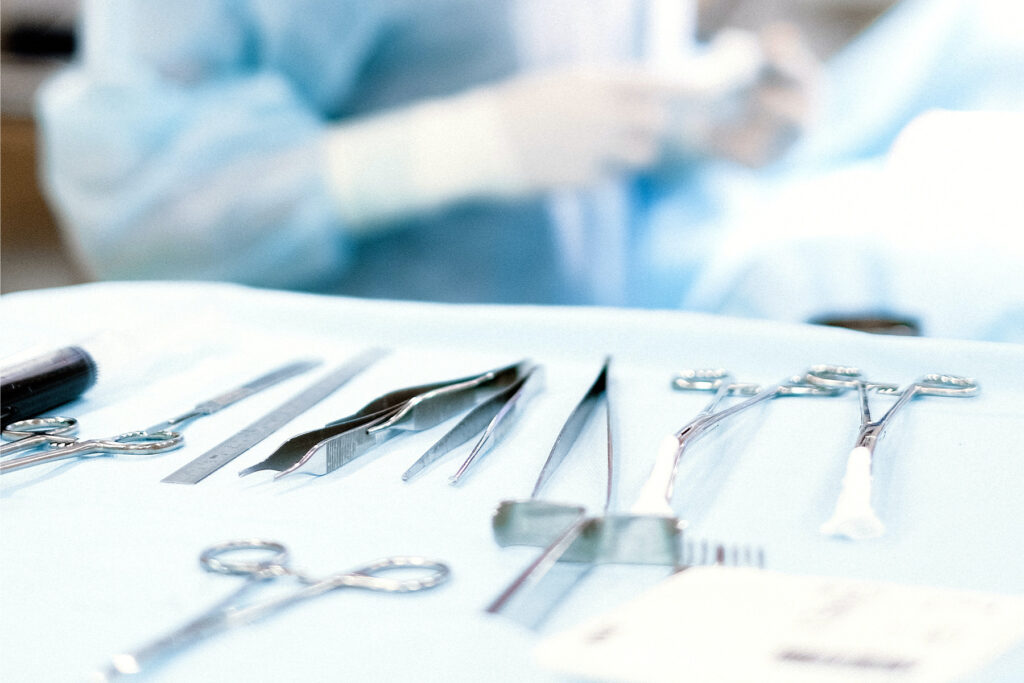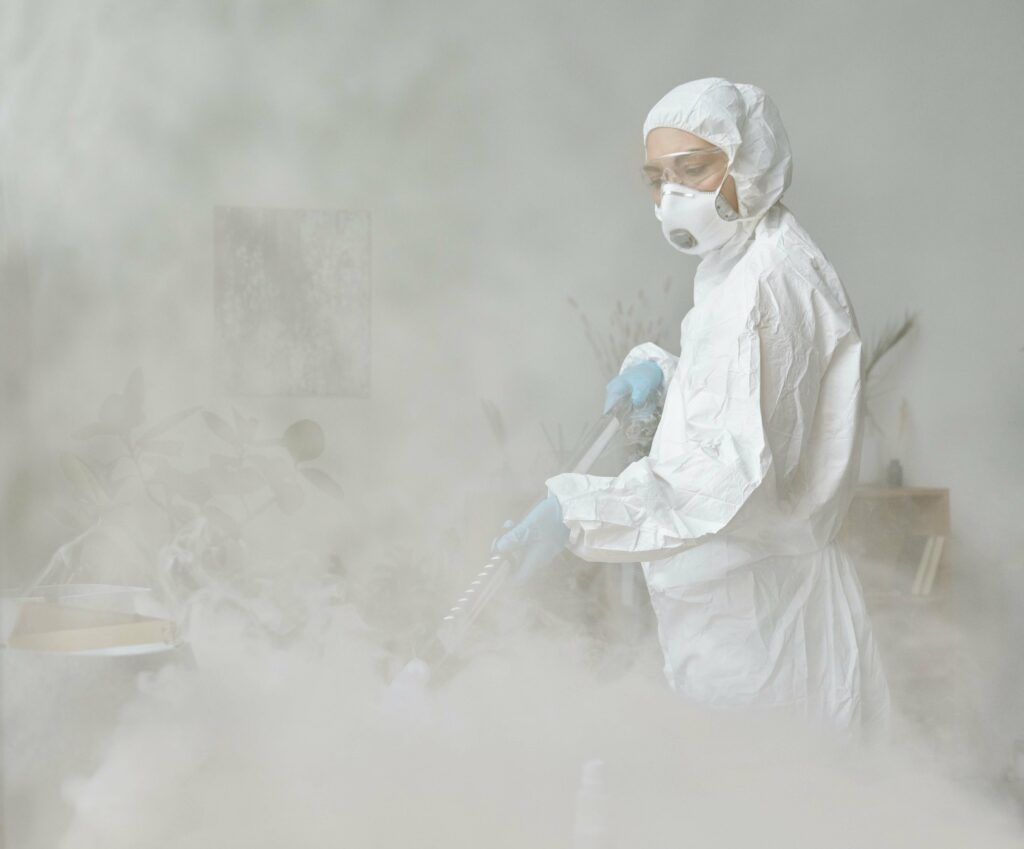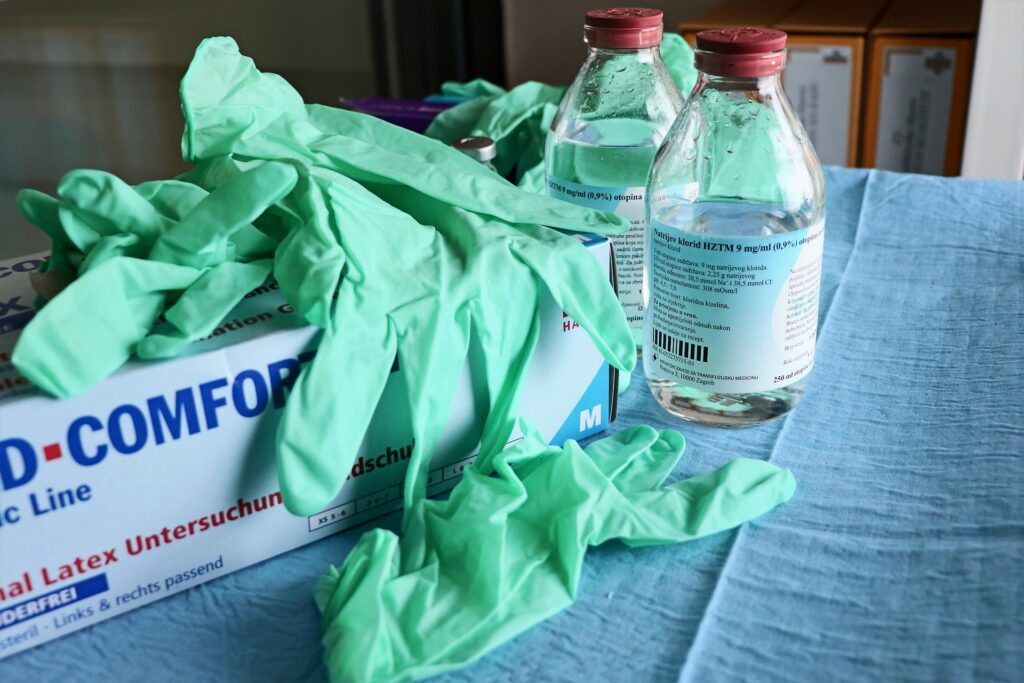Disinfection of medical devices all you need to know
According to the World Health Organisation (WHO), hundreds of millions of people worldwide are affected every year by avoidable infections in health care (HAI – healthcare-associated infections). An unnecessarily large number of HAIs come as a consequence of handling contaminated medical equipment and medical devices. These devices are vital for saving patients’ lives and protecting health care workers, but it is also crucial that training, equipment, and procedures are in place to ensure that they are safely cleaned and disinfected after use.
What is the disinfection process and why is it important?
Before diving in the disinfection process of medical devices, general principles for cleaning and disinfecting and some key definitions must be clarified. WHO issued a publication describing decontamination and reprocessing of medical devices, where the decontamination process is divided into three levels: cleaning, disinfection, and sterilization.
1. Cleaning
Cleaning is the first step which implies the removal of contagious biological material, dust and soil from a surface that needs to be disinfected. This is accomplished manually or mechanically using water with detergents or enzymatic products. After removal of physical material, the second step is disinfection.
2. Disinfection
Disinfection is the process of removing disease-producing organisms to render an item safe for handling. An example would be placing medical instruments in a washer – steriliser. Disinfection by definition suggests using an agent that inactivates nearly all disease-producing microorganisms, but it may not achieve the same reduction in microbial contamination levels as sterilisation, the next step.
3. Sterilization
Sterilization is a process used to render an object free from microorganisms including viruses and bacterial spores. Because sterilization of all patient-care items is not necessary, healthcare policies must identify on the basis of the items’ intended use, whether cleaning, disinfection, or sterilization is needed.

What is the difference between disinfection and sterilization?
Disinfection removes most germs, but sterilisation removes all good and bad microorganisms. Sterilization is very common in medical settings while disinfection can take place in households, businesses and schools.
As mentioned, the decontamination process of instruments and medical devices plays a very important role in the prevention of HAI. Defective sterilization of surgical instruments and disinfection of reusable devices and objects such as endoscopic, respiratory, transportation devices occur in medical industry settings and lead to infections of patients, health care professionals and visitors.
HAIs that most commonly appear due to inadequate decontamination procedures or harmful device reuse practices are surgical site infections (SSI), HIV infections, hepatitis B and C, urinary and vascular catheter-associated infections.
In the light of threats caused by Coronavirus pandemics, the awareness about the spread of viral pathogens has increased and followed by paying more attention and investing into Infection and Prevention control (IPC) infrastructure and improving medical practices.
What are the features of an ideal disinfectant?
According to WHO guidelines for decontamination, there are few points that an ideal disinfectant must follow:
- Must have high germicidal activity,
- Will rapidly kill a wide range of microorganisms, including spores,
- Is chemically stable,
- Is effective in the presence of organic compounds,
- Is compatible with the surface being disinfected,
- Has the ability to penetrate into crevices (desirable),
- Must be inexpensive and aesthetically acceptable.

What methods of disinfection can be used?
Centre for Disease and Control (CDC) gives a wide range of disinfectants in their “Guidelines for Disinfection and Sterilisation in Healthcare Facilities”. Some of them are briefly mentioned below.
See here how to safely transport infectious patients.
Chemical disinfectants
ALCOHOL
Even though it is accessible and widespread, alcohol is not recommended for sterilizing medical and surgical materials because it is not sporicidal. Alcohols have been used effectively for disinfection of medical equipment like oral and rectal thermometers, hospital pagers, scissors, and stethoscopes.
Furthermore, alcohol is occasionally used to disinfect external surfaces of equipment such as ventilators and manual ventilation bags, ultrasound instruments, CPR manikins or medication preparation areas. In healthcare settings, alcohol (ethanol or propanol) is commonly used in at concentrations of 60%–70%.
CHLORINE AND CHLORINE COMPOUNDS
Hypochlorites are widely used in healthcare facilities in a variety of settings: for spot-disinfection of countertops and floors, as well as for disinfecting tonometer heads, laundry, and dental appliances. In addition, they can be used for decontaminating blood spills and CPR training manikins.
Most common chlorine variation – a full-strength bleach has been recommended for self-disinfection of needles and syringes when there are no conditions of acquiring new ones. Furthermore, chlorine has been used as the disinfectant in water treatments. It is important to mention when using a chlorine releasing agent, care is necessary with metals and plastic, as chlorine is corrosive.
FORMALDEHYDE
Formaldehyde is used as a disinfectant and sterilant in both liquid and gaseous state. It is a high-level disinfectant, meaning that it’s capable of the complete elimination of all microorganisms except for a small number of bacterial spores.
Still, the healthcare uses of formaldehyde are limited because of its irritating fumes and its odour. The limitation is in the link found between Formaldehyde and nasal and lung cancer. Formaldehyde is also used to prepare viral vaccines (poliovirus and influenza), as an embalming agent, and historically has been used to sterilise surgical instruments, commonly mixed with ethanol.
HYDROGEN PEROXIDE
Hydrogen peroxide is active against a wide range of microorganisms, including bacteria, yeasts, fungi, viruses, and spores. Under normal conditions and when properly stored, hydrogen peroxide is extremely stable.
Commercially available 3% hydrogen peroxide is a stable and effective disinfectant for use on inanimate surfaces. It has also been used in concentrations from 3% to 6% for disinfecting soft contact lenses, ventilators, fabrics, and endoscope, and proven to be effective in spot-disinfecting fabrics in patients’ rooms.
PERACETIC ACID
Peracetic acid is an oxidising agent that acts in a similar way to hydrogen peroxide. The most important advantages of peracetic acid are: it lacks harmful decomposition products (acetic acid, water, oxygen, hydrogen peroxide), it is effective in the presence of organic matter, proven to enhance removal of organic material, and leaves no residue. It is used in automated machines to chemically sterilise medical (endoscopes, arthroscopes), dental, and surgical instruments.

Miscellaneous Inactivating Agents
OTHER GERMICIDES
Other germicides represent compounds that have antimicrobial activity, but for various reasons have not been incorporated into healthcare disinfectants. These include mercurials, sodium hydroxide, β-propiolactone, chlorhexidine gluconate, cetrimide-chlorhexidine, glycols, and the Tego disinfectants.
METALS AS MICROBICIDES
The anti-infective activity of some heavy metals has been known from ancient times, for example, silver has been used for prophylaxis of conjunctivitis of infants, and as a topical therapy for burn wounds. Studies show that heavy metals such as silver, copper, and iron could be used for environmental control, disinfection of water, or reusable medical devices or incorporated into medical devices.
ULTRAVIOLET RADIATION
The wavelength of UV radiation used for disinfection ranges from 210 nm to 328 nm, while its maximum bactericidal effect occurs at 240 nm – 280 nm which makes the mercury vapour lamps emit maximum microbicidal activity. Usage of UV radiation in the healthcare environment (operating and isolation rooms, biologic safety cabinets) is limited to destruction of airborne organisms or inactivation of microorganisms on the surfaces.
Why is disinfection important in the medical device industry?
In early 2020, healthcare providers all over the world experienced how hard it was to get hold of necessary PPE and other medical equipment during a pandemic. This experience has brought into sharp relief the importance of:
- procuring equipment and supplies as part of a preparedness plan before an epidemic, and
- utilising high quality and reusable medical equipment whenever possible, as you are less reliant of vulnerable global supply chains and spikes in demand.
This situation emphasises the importance of appropriate training, equipment, and procedures for cleaning and disinfecting of reusable medical equipment and medical devices.
The focus of every health care professional should be on minimising the risk of cross-contamination, whether it is from HAI, Coronavirus, Ebola, or any other infectious disease. By following strict guidelines for cleaning and disinfection of medical devices, one can avoid endangering or even losing a life. After all, the main purpose of every health care professional is to help their patients and to save lives.
EpiShuttle’s disinfection process
Meeting the international standards and safety requirements, EpiGuard stresses the importance of proper cleaning and disinfection. The decontamination should be performed immediately after transportation of patients with suspected or confirmed airborne infectious disease, droplet transmitted disease or contact transmitted infectious diseases.
Years of first-hand experience in intensive care, treatment, and transportation of patients with highly infectious diseases have resulted in four recommended methods of the decontamination process.
Decontamination of the EpiShuttle is performed in two steps and its detailed description is provided in “Instructions for use” which needs to always be at hand. The first step is the removal of contagious biological material by appropriate cleaning, followed by the second step – the disinfection of the contaminated areas.
As a Class 1 medical device, the EpiShuttle has passed rigorous testing including most commonly used chemical disinfectant in the healthcare environment. The disinfection chemicals that are known to be compatible with materials comprising the EpiShuttle’s structure are peracetic acid, hydrogen peroxide, alcohol, and ozone.
PubMed publication about “Validation of the Decontamination of a Specialist Transport System for Patients with High Consequence Infectious Diseases” describes a series of experiments of H2O2 fumigation used for disinfecting the EpiShuttle.
The conclusion is that the hydrogen peroxide vapour fumigation system is “highly likely to be effective in killing human pathogens that cause high consequence infectious disease”. Protecting health care professionals and stopping cross-contamination.
In addition, appropriate PPE is always necessary when handling contaminated parts to avoid contagion or inhalation of hazardous vapours. It is highlighted in every guideline for cleaning and disinfection of medical devices, including CDC and WHO guidelines.
Have any questions?
DISCLAIMER: The medical device information is provided for general informational and educational purposes only and is not a substitute for professional advice. Accordingly, before taking any actions based upon such information, we encourage you to consult with the appropriate professionals. The use or reliance of any information contained on the site is solely at your own risk. The EpiShuttle does not protect against all types of CBRN occurrences. Accordingly please consult with medical professionals before usage.